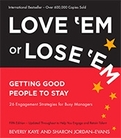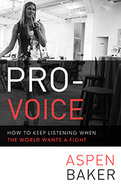BK Blog Post
How to Not Get Tricked When Buying Leather Goods
 Posted by
Jeevan Sivasubramaniam,
Managing Director, Editorial,
Berrett-Koehler Publishers Inc.
Posted by
Jeevan Sivasubramaniam,
Managing Director, Editorial,
Berrett-Koehler Publishers Inc.
Though the majority of these life hacks are intended for readers to have the advantage over others, sometimes I feature hacks that others may be using against you. This hack is one that is often used against consumers buying leather goods.
When you read a label on leather goods that states "100% genuine leather" or even just "genuine leather," you should know that you are not reading a general description but actual a statement about the quality of the leather. "Genuine leather" is pretty much the lowest grade of leather there is. It's leather that has an artificial surface or grain applied to it to make it look like higher grade leather, but it isn't. Unless you genuinely don't intend to have the item for a long item, don't buy it. Unlike better quality leathers, it will not age well and it will fall apart quickly.
What you want to read on the label is "Full-Grain Leather" if you want the really good stuff that will last for ever and look better with age. (But this grade of leather hasn't been sanded down, so it will be thick). Second to that is "Top-Grain Leather" which is quality leather that has been sanded down to take away imperfections and so is thinner and easier to work with. This sort of leather is used for higher-quality goods but it is not as durable because of its thinness. Still, either one of these will work well.
Oh, and whatever you do, never, ever buy anything that is made of "bonded leather." Bonded leather uses leftover scrap pieces of leather that are shredded to a near-pulp. These shreds are then bonded together using polyurethane or latex on top of a fiber sheet. There’s no way of telling the level of organic leather material versus chemical. Bonded leather is real leather as much as chicken mcnuggets are real chicken meat.






